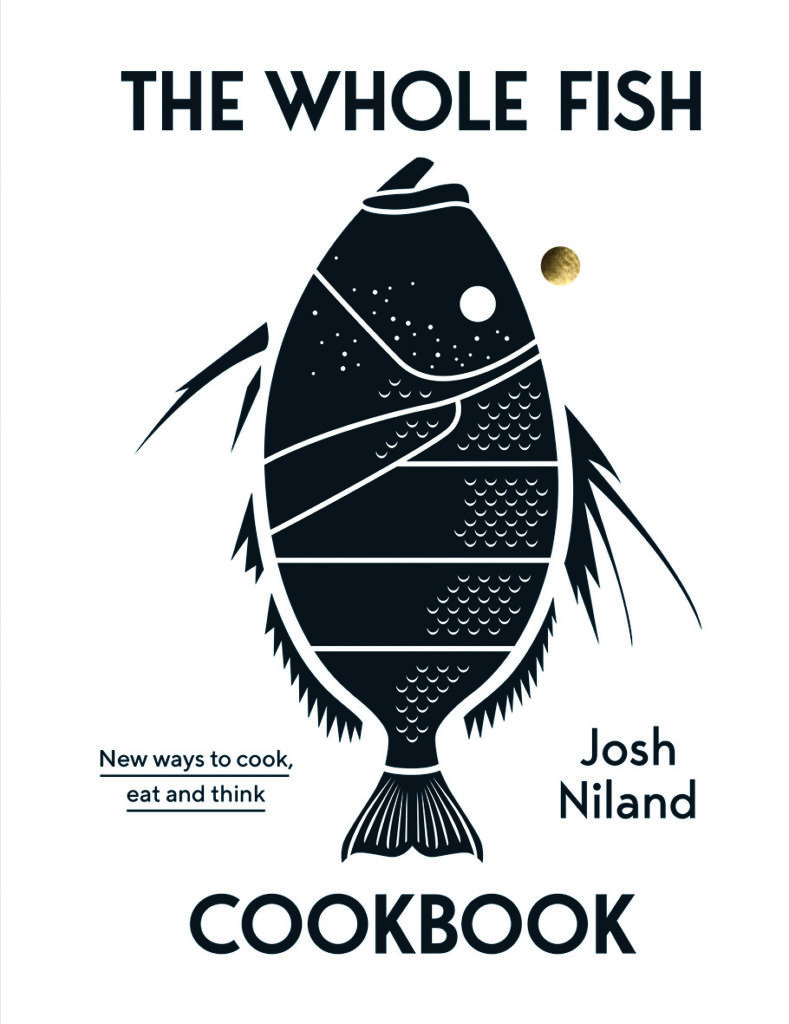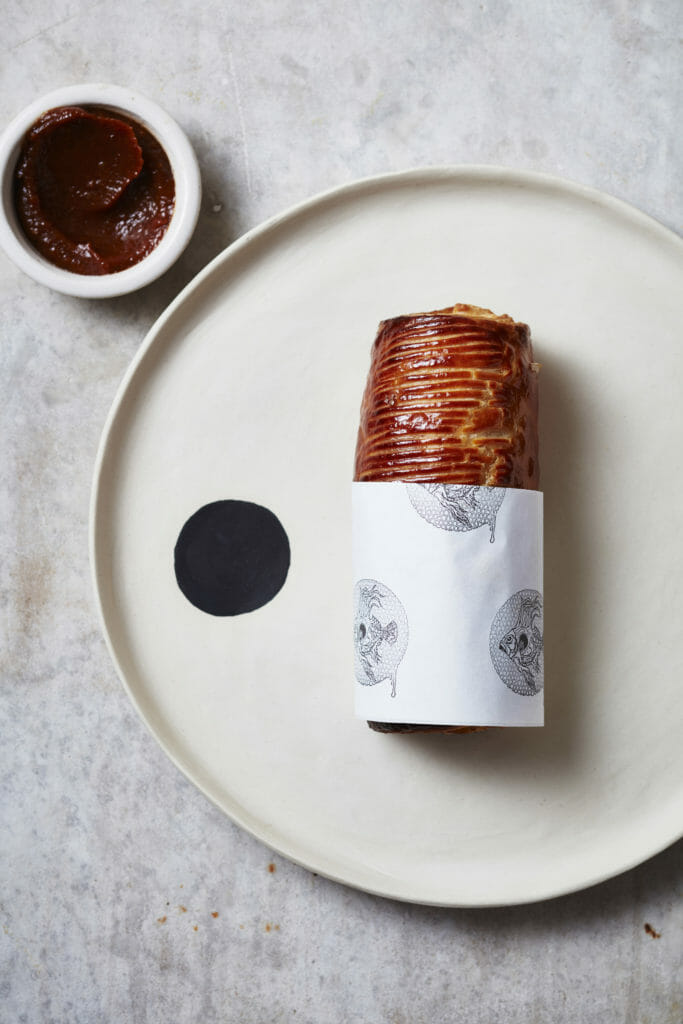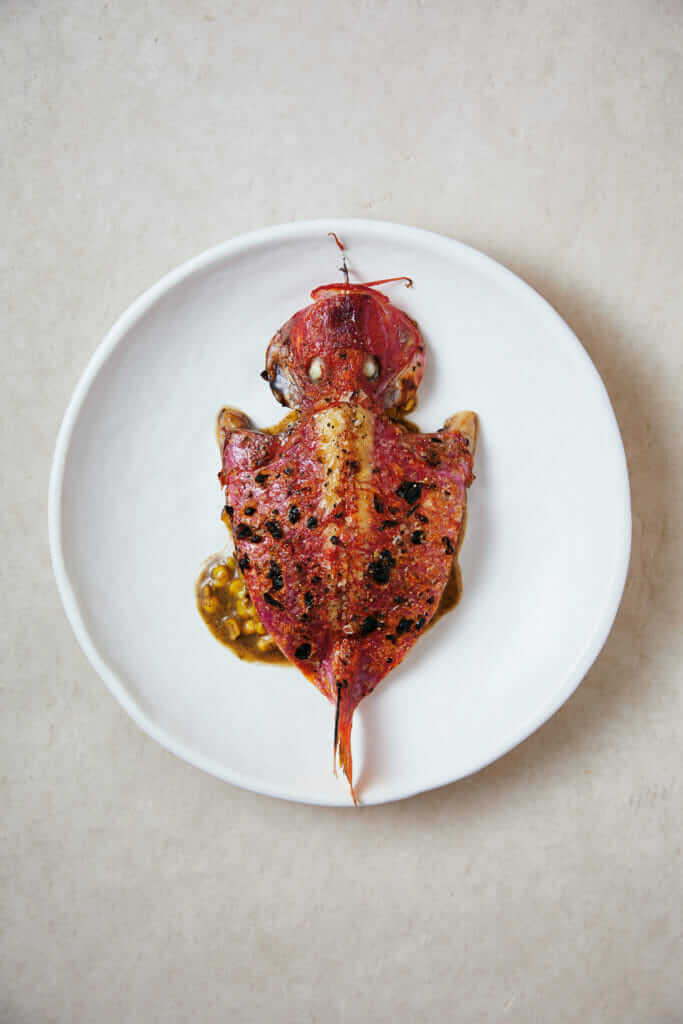Twice a month our writer cooks from the book and decides if these farm-to-table recipes are worth the investment.

These days we’re pretty familiar with the idea of nose-to-tail eating when it comes to our meat: you don’t get to eat filet mignon without also finding a use for the shin and the liver. With The Whole Fish Cookbook (Hardie Grant; $40), Australian chef Josh Niland wants you to think about fish the same way as you think about meat, both in terms of what you eat and how you eat it. As the owner of Sydney’s Saint Peter restaurant and the next door Fish Butchery, not only is Niland suggesting milt mortadella and fish blood pudding, he’s also a proponent of dry-aging your fish to maximize flavor and texture. This book starts with a thorough section addressing issues around cooking fish (“fishues” as he calls them); how to shop for and store fish; and in-depth fish butchery instructions. The recipes that follow include parts most of us are used to cooking (that would be fillets), as well those less common, like collars, livers and ribs. Niland has helpfully included alternative fish species ensuring that the book is still relevant for North Americans.
Eager to try a lighter, fishier twist on one of my childhood favourites, I whipped up a batch of Niland’s fish sausage rolls. The filling was made from trout, scallops and white fish whizzed in a food processor, then combined with grated onion, chopped parsley, white pepper, salt, fennel seeds and nutmeg. This filling was wrapped in puff pastry and generously egg-washed before baking. Served hot or eaten cold the next day, not only were they delicious and easy, but a great way of using up smaller scraps of fish.
In his introduction, Niland mentions that he has written this book for his fellow culinary professionals as well as home cooks, and there are definitely points where I felt I was in over my head. But if you’re an adventurous fish lover ready to take your appreciation to the next level, The Whole Fish Cookbook will open up a whole new pescatarian world for you.
Wendy Underwood tests out cookbooks weekly on Instagram at @kitchenvscookbook.
Excerpted from The Whole Fish Cookbook: New Ways to Cook, Eat and Think (C) 2019 by Josh Niland. Reproduced by permission of Hardie Grant Books. All rights reserved.
Fish Sausage Roll
MAKES 8
The public school I attended in East Maitland had a memorable sausage roll, and one that I can remember had just the right amount of seasoning, fat and crispness from the pastry. I’m not 100 per cent sure of what was in it, but I wanted to try to replicate it by producing this version with fish. In the restaurant we serve this with a tomato sauce made from native bush tomato, but it’s delicious with anything.
4 square sheets puff pastry plain (all-purpose) flour, for dusting
Filling
375 g (13 oz) ocean trout or sea trout belly
75 g (2¾ oz) fresh scallop meat
500 g (1 lb 2 oz oz) white fish, such as bream, flathead or whiting
1 onion, grated on a box grater
1 tablespoon salt
13/4 teaspoons ground white pepper
13/4 teaspoons ground fennel seeds
freshly grated nutmeg, to taste
15 g (½ oz/½ cup) chopped flat-leaf (Italian) parsley
Egg wash
2 whole eggs
1 egg yolk
1 tablespoon white sesame seeds sea salt flakes
ALTERNATIVE FISH:
Arctic char
Hake
Salmon
Before starting, chill all the parts of a food processor capable of blending fish to a puree. Have a bowl of ice ready. Once the food processor is chilled, blend the trout, scallop meat and white fish separately into smooth pastes. Combine the fish purees together and season with all the remaining ingredients. Keep this fish puree chilled over the bowl of ice.
Mix all the egg wash ingredients together in a bowl. Arrange the puff pastry sheets on a lightly floured work surface and arrange large spoonfuls of the fish mix on the pastry in the shape of a log. Using egg wash, brush the surrounding pastry liberally, then roll into the shape of a sausage roll. Either fold up the ends of the pastry to seal or cut to expose the ends. Brush the sausage roll with egg wash and chill for 30 minutes until set.
Meanwhile, preheat the oven to 200°C (400°F). Brush the sausage roll with more egg wash, then season with sea salt and bake for 15 minutes, or until the pastry is golden and the filling, when checked with a skewer, is hot to the touch. Serve with a generous spoonful of ketchup.
BBQ Red Mullet, Corn & Kelp Butter
SERVES 4
The intoxicating aroma of red mullet cooking over a charcoal grill is enough to get anyone excited about this fish. I always refer to red mullet as poor man’s lobster due to its distinct shellfish-like flavor, but this is a delicious dish that is rich, full of umami and sweetness from the corn as well as the skin of the fish.
2 liters (68 fl oz / 8 cups) water
100 g (3½ oz / 1/3 cup) fine salt
4 ears of corn
90 ml (3 fl oz/ 1/3 cup) extra-virgin
olive oil
sea salt flakes and freshly cracked black pepper
200 g (7 oz) butter, softened
2 tablespoons ground dried kelp (or use nori or wakame)
100 ml (3½ fl oz) Brown Fish Stock (see page 67)
lemon juice, to taste
4 boneless butterflied red mullet, about 200 g (7 oz) each, skin on, head and tail on
For the charcoal grill, make sure the grill is hot and the charcoal has cooked down to hot embers that have levelled out so the heat is even.
Bring the water and fine salt to the boil in a large saucepan over a high heat. Add the corn, cover and cook for 4 minutes, or until tender. Cool completely, then strip the husk from the corn, brush the kernels with 30 ml (1 fl oz) of the olive oil and season with sea salt.
Make sure the heat of the grill is even and you know where the hot spots of the grill are. Grill the corn on the grill rack for 4 minutes, or until lightly blackened and charred all over. Remove from the grill and strip the kernels from the cob. Set aside.
Whisk the butter in a stand mixer fitted with the whisk attachment until pale and doubled in volume. Add the ground kelp and mix until it is incorporated.
Heat the stock and corn kernels in a saucepan until the stock is reduced by half. Dice the kelp butter and add it piece by piece to the stock, swirling the pot over a low heat until the butter is emulsified. The sauce should be thick and shiny. Season with lemon juice, pepper and a little salt. Keep warm.
Brush the fish with the remaining olive oil and season the skin liberally with salt. Place the fish, skin side down, on the grill rack, add a fish weight on top of the flesh closest to the head and grill for 2 minutes. Reposition the weight to the centre of the fish and cook for a further minute.
When the fish is 70 per cent cooked, remove it from the grill. Divide the corn and kelp butter sauce between plates and lay over the fish to serve.
Brown Fish Stock
SERVES 4
I am purposefully writing this recipe just as a method because the stocks I make are derived from the ingredients we have to hand. This is not to say that a stock should ever be used as a compost bin to discard mishandled ingredients.
To produce a great brown fish stock, work with the same species of fish and not a mixture. It’s important not to wash your fish bones; soaking a fish frame (the skeleton) in water to ‘purge off the blood’ or wash away impurities is backward logic to me as it only dilutes any qualities that the fish frame has.
Fish frames that have been allowed to dry slightly overnight in a refrigerator will take on better colour – giving you greater flavor – and will not stick to the pan when browning. I have always been told to cut the eyes from the head as they bring cloudiness and imperfection to the final result, but it is that imperfection and cloudiness that brings viscosity, flavor and character to the stock. There are times, however, when a clear stock is required and the omission of eyes could be considered. Chopping the fish frame into four or five pieces will maximize the opportunity to caramelize the surface during browning.
Gills will always bring bitterness to a stock and should be discarded. The congealed blood that resides in the spine of the fish just below the head can be easily removed with a pair of fish pliers or tweezers and then rubbed with paper towel.
Heat enough ghee or neutral-flavored oil in a wide, heavy-based pot over a high heat and wait until there is a light haze over the pan. Carefully distribute the fish frame (80 per cent) pieces around the base, don’t overlap or overcrowd the pan. Work in batches if necessary. Once all the fish is browned, about 5 minutes, remove and set aside.
Keep the heat high, add the vegetables (15 per cent), such as shallots, garlic and celery and coat well with all the fish fat and caramelized scratchings from the base of the pan. Add any hard herbs and toasted aromatics, such as fennel seed, star anise or coriander.
Once the vegetables have coloured slightly and are beginning to soften, return the fish frames to the pan. Add enough cold water to just cover the ingredients.
Cook for 25–30 minutes over a medium–high heat without skimming until the stock has reduced by half and the liquid is thicker in texture and carries a beautiful tan colour. (This lack of skimming may go against what you are always instructed, but the impurities that rise to the surface have a lot of flavor and I prefer a less clear, more viscous and richly flavored stock to one with less taste.)
Pass through a sieve for traditional stock requirements or through a mouli and give it a quick pulse in a food processor to bring more richness and density to the finished stock. You could also emulsify a knob of butter in the stock with a little lemon juice – it’ll only need a warm piece of sourdough to take it to even greater heights.
Fried Scales – Sweet & Savoury
Fish scales are wonderful little vehicles for flavour. On the opening menu at Saint Peter we fried red mullet scales and seasoned them with vinegar powder and ground fennel seeds, then sprinkled them over the top of a salt-roasted pumpkin. Texture is so important with softer ingredients like this and fish scales, if used in a considered way, can be a creative, delicious way to provide it.
Scale a smaller fish that has smaller scales, such as whiting, bream, red mullet or flathead. Place the scales in a small saucepan of cold water to cover and bring to the boil. Repeat this process 5 times, each time with new cold water. This will not only clean the scales but make them slightly more tender in the final product.
Meanwhile, pour 2 liters (68 fl oz/8 cups) canola (rapeseed) oil into a saucepan set over a medium– high heat. While this is coming up to the desired temperature of 185°C (365°F), make sure that the blanched scales are completely dry. Dust them very lightly in rice flour.
When the oil has reached a light haze and is 185°C (365°F), carefully add the scales and deep-fry for about 5 seconds, until crisp but without too much colour. Using a sieve, drain and set on paper towel to dry out. Season liberally with fine salt and set aside in a dry place ready for serving. You can add other flavours here too, such as ground fennel, togarashi, ground seaweed, etc.
When considering fish scales for sweet applications, at the point of boiling the scales in water 5 times, on the fifth time trade the water for a 60:40 sugar:water solution. This will give the scales a thin sugar coating that, when fried, will caramelize and have the potential for sweet applications.

